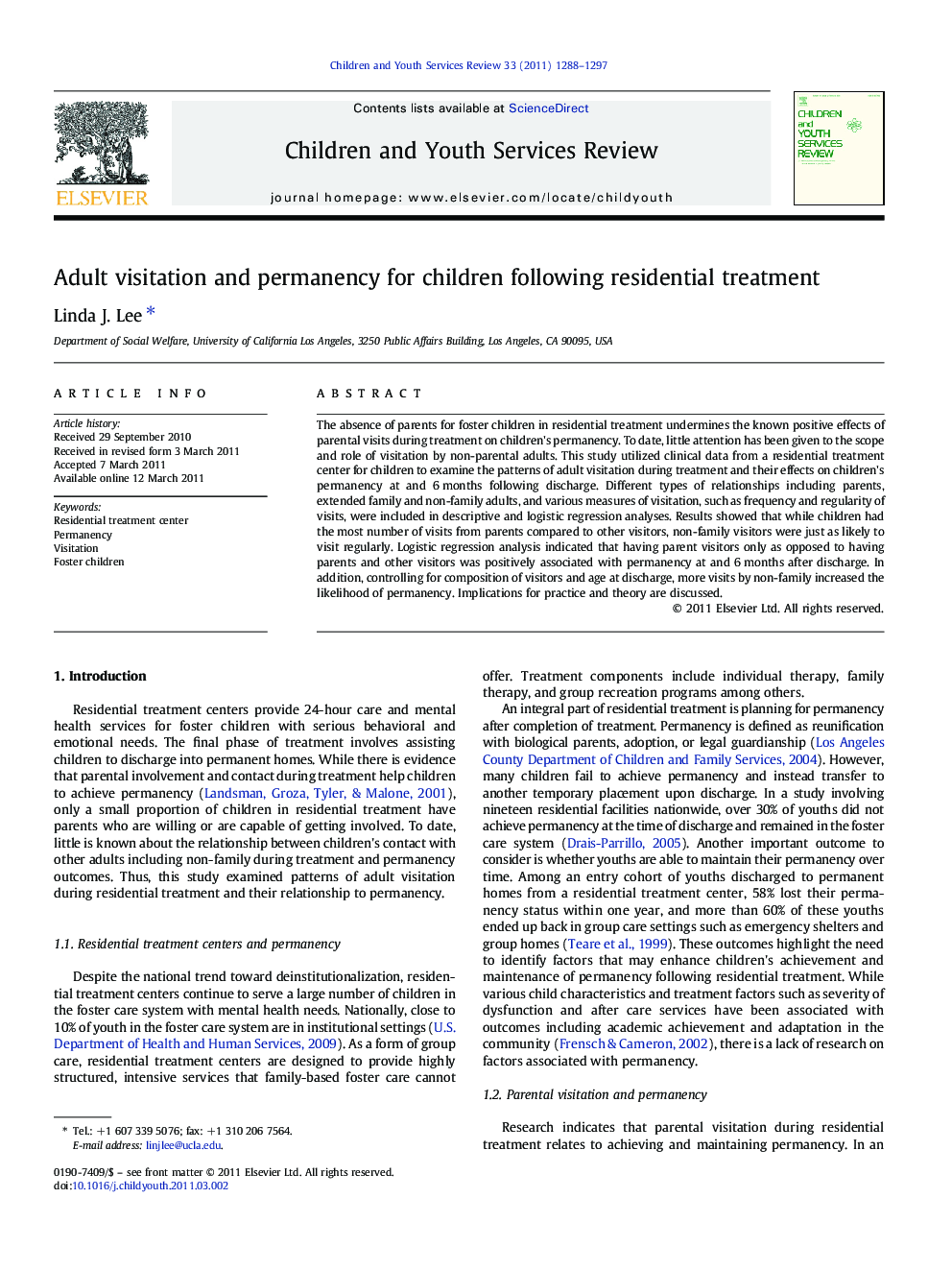| Article ID | Journal | Published Year | Pages | File Type |
|---|---|---|---|---|
| 346878 | Children and Youth Services Review | 2011 | 10 Pages |
The absence of parents for foster children in residential treatment undermines the known positive effects of parental visits during treatment on children's permanency. To date, little attention has been given to the scope and role of visitation by non-parental adults. This study utilized clinical data from a residential treatment center for children to examine the patterns of adult visitation during treatment and their effects on children's permanency at and 6 months following discharge. Different types of relationships including parents, extended family and non-family adults, and various measures of visitation, such as frequency and regularity of visits, were included in descriptive and logistic regression analyses. Results showed that while children had the most number of visits from parents compared to other visitors, non-family visitors were just as likely to visit regularly. Logistic regression analysis indicated that having parent visitors only as opposed to having parents and other visitors was positively associated with permanency at and 6 months after discharge. In addition, controlling for composition of visitors and age at discharge, more visits by non-family increased the likelihood of permanency. Implications for practice and theory are discussed.
Research Highlights► Children had approximately four visits per month by adults during treatment. ► Parents and non-family visitors did not differ with regards to visit regularity. ► Having a parent visitor was associated with greater odds of achieving permanency. ► Additional non-family visits increased the odds of achieving permanency.
